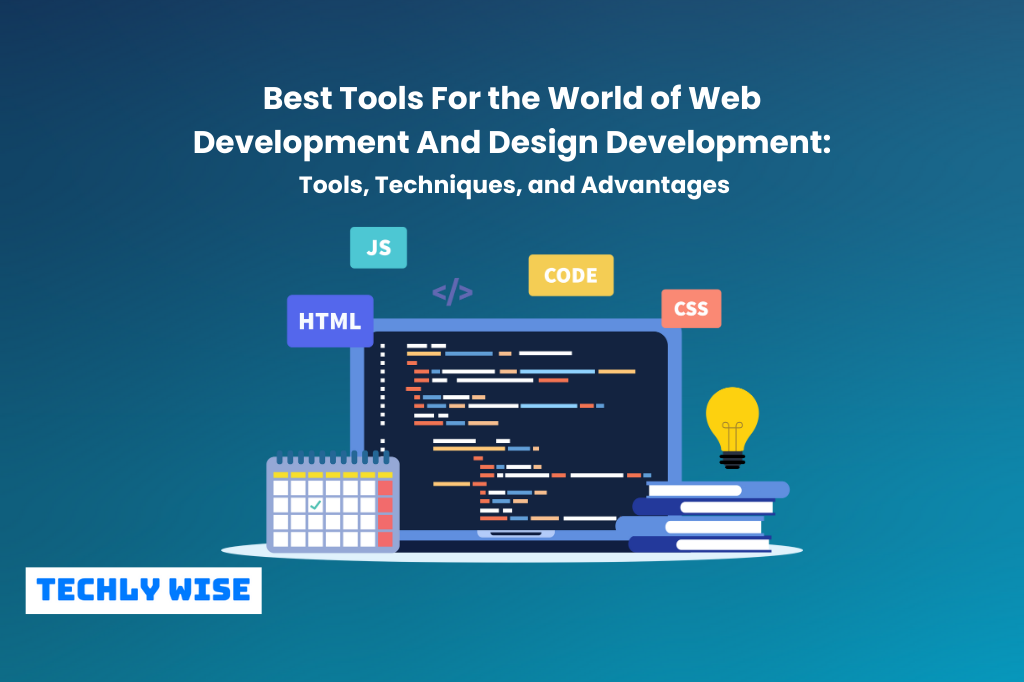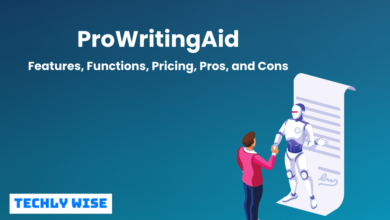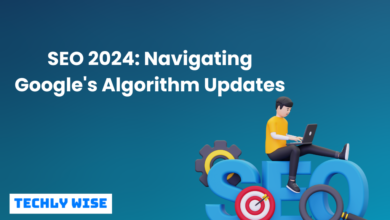
The process of building a website for the Internet also referred to as the World Wide Web, or a private network, an intranet, is called web development. A simple static page of plain text can be created with web development, as well as complex web apps, online shops, and social network services.
The term “Web development” can apply to a wide range of tasks, including a web server, web design, web engineering, web content generation, client-side/server-side scripting, client liaison, network security settings, and e-commerce development.
Web professionals refer to the two primary non-design aspects of building Websites writing markup and coding as “web development”. Web development can employ content management systems (CMS) to make content revisions easier and more accessible to users with only rudimentary technical skills.
Teams of web developers for larger enterprises and organizations may number in the hundreds and create websites using standardized techniques like Agile processes. Smaller businesses might only need one developer, either permanently or under a contract, or they might assign more staff to positions needing a similar skill set, such as a graphic designer or an information systems technician.
Instead of being the purview of one department, web development may call for departmental cooperation. The three different specializations available to web developers are front-end, back-end, and full-stack.
Front-end developers are in charge of the behavior and graphics that appear in the user’s browser, whereas back-end developers work with the servers. Since Tim Berners-Lee developed the World Wide Web at CERN, it has become one of the most widely used technologies ever and has been commercialized.
Tools for Web Design And Development
Sublime Text 4
A good code editor may truly save you a lot of time and help your eyes and brain while you’re writing code. Our current preference is Sublime Text 4. It has a clean, user-friendly design, and is quick, light, and responsive, all of which make it easy for you to get into the programming flow. With its extensive selection of plugins, Sublime Text is also incredibly adaptable. No, it’s not free, but given how much money you’ll save using this code editor, we still believe it’s worth the money.
Figma
Real-time collaboration amongst several designers is made possible by the interface design tool Figma. This is quite successful when several project stakeholders are impacting the final output. It is so successful that the web design industry as a whole has embraced its popularity like wildfire. And yet Adobe just decided to buy it for a cool $20 billion, despite having a direct rival in the form of XD (below). Simply told, Figma is doing something right. Figma is available in both free and premium editions through the browser on Windows, Mac, or Linux, depending on what you use it for.
Visual Studio Code
Our current free code editor is Visual Studio Code. Although Microsoft developed it, it is open-source. It has Git commands and a built-in terminal. Code debugging is possible directly from the editor.
Extensions are available to add more languages, themes, debuggers, and other features. Additionally, you have Microsoft’s brilliant IntelliSense tool, which offers autocompletion of code and information on known variable names and function parameters, in addition to syntax highlighting and autocomplete.
Adobe XD
Adobe XD is still a viable choice, especially if you use the Adobe Creative Cloud suite, even though Adobe is still in the process of purchasing Figma. Most importantly, it interacts with the rest of Creative Cloud, making it simple to work with and import elements from Photoshop or Illustrator. The user interface (UI) will feel comfortable and familiar if you have used other Adobe programs before, so there shouldn’t be a significant learning curve.
Drawing tools, non-static interaction tools, desktop mobile, previews, and sharing capabilities for providing design input are all available in XD. To start a project, you can choose a device-specific artboard size, and you can even import well-known UI kits, like Google’s Material Design.
Marvel
Marvel is another web design tool that’s ideal for coming up with quick ideas, enhancing an interface to look the way you want it to, and creating prototypes. It has an extremely cool method of creating pages that lets you simulate your design using a prototype.
You may integrate your designs beautifully into the process of your project. Interestingly, there is a capability for integrated user testing, which is still rather uncommon in the world of web design tools. There is no need to download anything because it is entirely online.
Codespaces
A browser-based code editor based on Visual Studio Code Codespaces. It allows you to modify, launch, and debug your applications from any device and supports extensions, Git repositories, and a built-in command line interface. Doing so allows you to work remotely and facilitates developer collaboration.
You can also launch codespaces directly from Github. Additionally, it is fast to spin up a new development environment for any size project due to prebuilt images. Within 10 seconds, GitHub’s own 35GB development image had started.
UXPin
A specialized prototype program called UXPin is available for Mac, Windows, and online use. UXPin comes closer to the code and lets you work with interactive states, logic, and code components, whereas most other design tools merely let you mimic interactions by connecting various items on your artboard. Numerous free icon sets are available, along with integrated element libraries for iOS, Bootstrap, and Material Design. Additionally, UXPin provides accessibility capabilities that make sure your designs adhere to WCAG requirements.
Proto.io
A top tool for creating lifelike prototypes, proto.io starts with unfinished concepts and ends with finished designs. Additionally, the program gives you a variety of options for your projects, such as intricate and unique vector animations.
You can begin by creating rough concepts in a hand-drawn manner, develop them into wireframes, and then complete them with a high-fidelity prototype. If you prefer to design using other tools, the Sketch and Photoshop plugins are helpful, but Proto.io does a good job of managing the entire design process. Other capabilities, like user testing, will verify your designs with a wonderful comprehensive response.
InVision Studio
InVision Studio strives to be the only UI tool you’ll ever need and to cover all the bases. It includes a ton of features, such as tools for rapid prototyping, responsive and collaborative design, and working with design systems, to help you develop stunning interactive interfaces.
Several capabilities overlap with those of InVision if you already use it with programs like Sketch. However, Studio’s prototyping capabilities are where it shines, particularly if your concept calls for animation. You can use rapid prototyping to make intricate and creative transitions, enabling you to accomplish the amount of animation you want.
Simply decide how you want your UI to appear at the beginning of its transition, and then design the finished product. InVision Studio takes care of the rest for you. Hovering, clicking, and swiping are just a few of the actions and interactions that can result in these distinctive animations and transitions. Use InVision to export your prototypes once you’re finished and share them with others. On the proper platform, you can see your project. Then, customers will be able to remark directly on the design.
Balsamiq
Balsamiq is a well-liked option if you’re seeking quick, effective wireframing. It has taken pride in its low-fidelity, fast, and simple methods since its debut in 2008. For your projects, you can quickly and easily construct a framework and layouts. Life is made easier by the usage of drag-and-drop elements and the capability to link buttons to other pages. Wireframes can be used right away to plan your interfaces, which you can then present to your team or clients.
Sketch
Bohemian Coding’s Sketch, a powerful vector-based tool for collaboratively building interfaces and prototypes, is one of the most well-known web design platforms. Since Sketch was created just for creating websites and apps, there are no unused functions to clog up your interface, and it works faster and more effectively than programs with a wider range of applications.
The community has created a large number of Sketch plugins to facilitate and streamline your creative process. The only operating system on which Sketch is accessible is Mac, and there are no plans to make it compatible with other ones.
ProtoPie
ProtoPie, a web design tool, enables you to build intricate interactions and get pretty darn near to your design’s ultimate end use. The capability of your prototype to control smart device sensors like tilt, sound, compass, and 3D Touch sensors may be its most notable feature. This is a terrific tool for individuals who want to incorporate native app functionality, depending on your project. There is no need for programming, and it is simple as pie.
Affinity Designer
It’s more like a subscription-free alternative to Adobe Illustrator than a dedicated UX tool. However, among web designers looking to build prototypes, Affinity Designer has grown in popularity. Adjustable, non-destructive layers allow you to make changes to images or vectors without affecting them, which is a benefit. With vector graphics, the million-fold magnification enables you to get up close and personal, while the undo and history tools let you go back thousands of steps.
The iPad can also run Affinity Designer. Also take note that this is the complete version you receive on the PC, not the condensed mobile app version you may anticipate.
MockFlow
A collection of tools for planning and wireframing websites is called MockFlow. With the help of a UI revision tracker, WireframePro makes it easy for you to lay out your original concept and refine it over time until it’s perfect. It has a preview mode for showing your work to coworkers and clients, as well as thousands of pre-built components and layouts that you may customize to your needs.
The rest of the suite can assist you with other areas of preparing your website after you’ve finished your wireframes, such as information architecture, creating a style guide, and going through a sign-off procedure.
Justinmind
Justinmind, which is compatible with Photoshop and Sketch, will help with prototyping. You can pick the interactions and motions you make to help assemble your prototype. It is responsive and features UI kits so you can quickly put together screens.
Framer
A prototyping system called Framer enhances teamwork and communication, particularly between designers and developers. It is designed with design systems in mind, connects with your code, and produces clear, continuously updated documentation. To maintain communication, which is a core duty, your design should be updated whenever your code is.
Fluid
Fluid is a straightforward and understandable tool for creating quick prototypes and developing concepts. It includes some lovely pre-built components to assist you in starting to make rapid prototypes. It’s really simple to put together your symbols using your favorite UI components once you’ve upgraded. With resources available for both high and low-fidelity prototypes, this tool provides a very quick UI design.
React
React, a declarative component-based JavaScript toolkit released in 2013, makes it simple to develop interactive user interface UIs. If you give React clear views for each state in your application, it will update and render the necessary components when your data changes. This framework works well for rapid prototypes with a minimal entry barrier as well as larger apps and websites with complicated view logic. Additionally, React Native can power mobile apps, and Node can be used for server-side rendering.
AngularJS
The open-source AngularJS framework was developed by Google for front-end web applications. It provides data-binding declarative templates with MVVM, MVW, MVC, and dependency injection, all of which are entirely client-side JavaScript implementations. It’s a wise choice for complicated applications and large projects that require structure.
Angular
The Angular Team at Google and a community of programmers maintain Angular, a free and open-source web app framework built on TypeScript. Contrast it with AngularJS to avoid confusion. Instead of using JavaScript, the former has been rewritten in TypeScript. For building sophisticated apps, Microsoft introduced TypeScript, a superset of JavaScript. Unlike AngularJS, Angular does not employ the concepts of scope or controllers; rather, its main architectural feature is a hierarchy of components.
Bootstrap
An old classic, Bootstrap still has a lot to offer. To effectively convey the number of columns between breakpoints, row-cols classes should have responsive containers that are fluid up to a particular breakpoint. Additionally, Bootstrap Icons, an open-source icon library made specifically for use with Bootstrap components, is available.
Advantages for Web Design and Development
A few advantages of using web design tools are as follows:
Control over design:
Using the characteristics of the program, web design tools enable you to customize your site as desired. For instance, you can alter key elements on your website to a specific color that meets your preferences or those of your customers.
Affordability:
Many web design programs and tools offer alternatives that are either free or fairly priced. Even though more expensive plans may come with more extensive or sophisticated features, you can still create a clear and practical website on a smaller budget.
Easy to Use:
You can find various tools and programs that are appropriate for your level of experience if you are new to web design. Even if you have no prior knowledge of coding or graphic design, you can quickly develop a simple web interface by using certain web design tools that make it easier for you to grasp the essentials.




